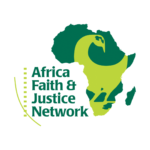What’s happening in Liberia? Is the war over ? Is it safe to travel there? These are the most common questions I’ve been asked regarding the situation in the West African country of Liberia. My three weeks on the ground in post-conflict Liberia in June gave me a glimpse of the present position of the country as it tries to restore and rebuild itself after a 14-year civil war. Certainly it would take much longer than 3 weeks to comprehend all that is going on in this restoration process.
The City
What strikes one most in the capital city of Monrovia is the sheer number of people everywhere. The recently completed census indicates that there are 3.48 million people in the country, with 1.14 million of them living in the confines of Monrovia. It is estimated that the infrastructure of the city is capable of sustaining a population of at most 350,000, so the strain on any kind of services is very obvious. There are people everywhere, many of them children. Due to conflict, disease, and poor nutrition, the median age of the population hovers around 15 or 16.
Unemployment is high. Some say 80 percent of the population does not work in the formal sector. The small market-stands provide a meager and uncertain source of income for many. The World Bank estimates that over three-quarters of Liberia’s population live below the poverty line of 1 USD per day. Many others, among them young men returning from the war, have no employment and often resort to thievery, especially in the crowded market areas and on state and private properties.
In 2007, a short term poverty reduction plan was put in place with a primary aim of creating jobs. This year, President Ellen Johnson Sirleaf presented a more extensive proposal to the IMF and World Bank. Also in place is a newly unveiled plan to relocate willing and qualified Liberians into rural areas by offering them jobs, benefits and good salaries. The Rural Incentives Pilot Program will focus initially on health, educational, and agricultural areas. Although we do not yet know the potential impact of these programs, it is clear that President Sirleaf is making an effort to address the extreme poverty in her country.
Still, there are many challenges for President Sirleaf. The electrical and sewer infrastructure of the country must be rebuilt completely. Many people use generators for power at least for several hours after dark, and use wells which fill the private water towers they have erected.
The woeful condition of the roads makes travel difficult both in the city and in areas leading to neighboring villages. Traffic congestion has become horrendous. Many more private automobiles, taxis, motorcycles, and motor bikes crowd the roads and slow the pace of traffic. Vehicles share the road with pedestrians who weave in and out of the moving traffic, some of them with carts full of building materials and other supplies. Just in the past twelve months, motorcycles have come into the city and serve as taxis along with the ever-present yellow cabs.
These are only a few of the major projects to be developed in the coming years. In spite of such daunting needs one can see the signs of development in the city. Larger businesses are operating. The cell phone industry, served by three companies, is booming, giving a large part of the population the ability to communicate more broadly. As I drove through the city, I remarked at the number of buildings that have been repaired and are open for business. Mostly these are government buildings, businesses of various kinds, churches, schools, and a sprinkling of private residences.
Billboards, both in words and in pictures, provide information regarding health care, especially HIV/AIDS, malaria, and TB. Other messages on the billboards encourage young people to go to school, remind people to talk instead of solving conflicts by fighting, promote elections as the means to democracy, and eliminate mob violence. There is a noticeable effort to promote the status of women, stating that rape is a punishable crime, that woman is a friend not an enemy. The Agency for Development and Gender promotes women and children’s needs.
The U.S. continues to provide significant aid to Liberia and has found a strong ally in President Sirleaf. In an outstanding show of solidarity with the Liberian people, the U.S. signed an act on June 12th to relieve Liberia’s debt; an important step that will allow the government to focus on rebuilding the country.
The Church
The Church in Liberia is alive and well. Several of the churches in the capital are enlarging their worship space to accommodate the larger numbers of parishioners. The need for this comes in part from the influx of people into the city, but also, as Apostolic Administrator Monsignor Karnley indicated, because of the witness of the Church itself. The Catholic Church was faithful to its people during the war. Church personnel stayed with the people in contrast to some other denominations. Noticeable too is the presence of more native clergy in the Monrovia Archdiocese. Almost all the churches in the Archdiocese of Monrovia are staffed by Liberian priests, or in some cases priests from other African countries. The diocese of Gbarnga still relies heavily on non-Liberian clergy since it currently has only four Liberian clergy.
The Archdiocese of Monrovia has been administered by Monsignor Andrew Karnley since 2004 when Archbishop Michael Francis was incapacitated by a stroke. Michael Francis—called by President Ellen Sirleaf the “conscience of the nation”—continues to suffer the effects of the stroke. Fortunately, his inability to speak has not affected his ability to recognize people and to be aware of Liberian and church developments.
